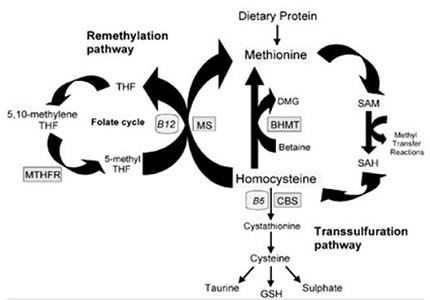Serum homocysteine levels and the risk of Osteoporosis
Abstract
Introduction: Osteoporosis is a major health problem which has devastating health consequences through its association with osteoporotic fractures. Prevention of osteoporosis by identifying the risk factors is a major challenge in the field of medicine. Elevated homocysteine level in blood can be a potential risk factor for the development of osteoporosis. We aim to study if a person with high circulating level of homocysteine has a decreased Bone Mineral Density (BMD), thus establishing an association between homocysteine and the risk of developing osteoporosis.
Method: Patients between the age group of 40-70 years attending BMD camps between July 2015 and December 2015 were included in the study. All of them underwent BMD test and blood samples were sent to the laboratory for estimation of serum homocysteine levels. The results were collected and analyzed to see if there was any association between serum homocysteine levels and osteoporosis.
Results: Out of the 58 males and 20 females with normal BMD, none had elevated serum homocysteine. 21 out of the 58 males and 47 out of the 82 females with osteopenia had elevated serum homocysteine. Of the 27 males with osteoporosis, 25 had elevated serum homocysteine while among the 125 females with osteoporosis, all 125 had elevated serum homocysteine levels.
Conclusion: From our study we concluded that people with high circulating level of homocysteine had a decreased Bone Mineral Density (BMD), thus establishing an association between homocysteine and the risk of developing osteoporosis.
Downloads
References
2. Ray NF, Chan JK, Thamer M, Melton LJ. Medical expenditures for the treatment of osteoporotic fractures in the United States in 1995: report from the National Osteoporosis Foundation. J Bone Miner Res 1997; 12:24-35.
3. Melton LJ . Adverse outcomes of osteoporotic fractures in the general population. J Bone Miner Res. 2003 Jun;18(6):1139-41. [PubMed]
4. Center JR, Nguyen TV, Schneider D, Sambrook PN, Eisman JA. Mortality after all major types of osteoporotic fracture in men and women: an observational study. Lancet 1999;353:878-82. [PubMed]
5. Harpey JP, Rosenblatt DS, Cooper BA, Le Moel G, Roy C, Lafourcade J. Homocystinuria caused by 5,10-methylenetetrahydrofolate reductase deficiency: a case in an infant responding to methionine, folinic acid, pyridoxine, and vitamin B12 therapy. J Pediatr 1981;98:275-8.
6. Mudd SH, Skovby F, Levy HL, et al. The natural history of homocystinuria due to cystathionine beta-synthase deficiency. Am J Hum Genet 1985;37:1-31. [PubMed]
7. A. deBree, N. M. van der Put, L. I. Mennen, et al., “Prevalences of hyperhomocysteinemia, unfavorable cholesterol profile and hypertension in European populations,” European Journal of Clinical Nutrition, vol. 59, no. 4, pp. 480–488, 2005. [PubMed]
8. W. Wouters-Wesseling, A. E. J. Wouters, C. N. Kleijer, J. G. Bindels, C. P. G. M. de Groot, and W. A. van Staveren, “Study of the effect of a liquid nutrition supplement on the nutritional status of psycho-geriatric nursing home patients,” European Journal of Clinical Nutrition, vol. 56, no. 3, pp. 245–251, 2002. [PubMed]
9. R. Clarke, “Lowering blood homocysteine with folic acid based supplements: meta-analysis of randomised trials,” British Medical Journal, vol. 316, no. 7135, pp. 894–898, 1998. [PubMed]
10. A. M. Kuzminski, E. J. Del Giacco, R. H. Allen, S. P. Stabler, and J. Lindenbaum, “Effective treatment of cobalamin deficiency with oral cobalamin,” Blood, vol. 92, no. 4, pp. 1191–1198, 1998. [PubMed]
11. Eussen SMP, De Groot PMG, Clarke R et al. Oral cyanocobalamin supplementation in older people with vitamin B 12 deficiency: a dose-finding trial. Arch Int Med 2005; 165(10): 1167-1172. [PubMed]
12. McLean RR, Jacques PF, Selhub J, Tucker KL, Samelson EJ, Broe KE, et al. Homocysteine as a predictive factor for hip fracture in older persons. N Engl J Med 2004; 351:2042–2049. [PubMed]
13. Hermann M, Schmidt PJ, Umanskaya N, wagner A, Taban-Shomal, widmann T, et al. The role of hyperhomocysteinemia as well as folate, vitamin B(6) and B(12) deficiencies in osteoporosis: a systematic review. Clin Chem. Lab Med 2007; 45: 1621–1632. [PubMed]
14. Clark R, Refsum H, Birks J et al. Screening for vitamin B 12 and folate deficiency in older persons.Am J ClinNutr 2003;77: 1241–1247. [PubMed]
15. vanMeurs JBJ, Dhonukshe-Rutten RAM, Pluijm SM, van der Klift M, de Jonge R, Lindemans J, et al. Homocysteine levels and the risk of osteoporotic fracture. N Engl J Med 2004; 350: 2033–2041. [PubMed]
16. Bucciarelli P, Martini G, Martinelli I et al. The relationship between plasma homocysteine levels and bone mineral density in post-menopausal women.Eur J Int Med 2010; 21(4): 301–30. [PubMed]
17. Tyagi N, Vacek TP, Fleming JT, Vacek JC, Tyagi SC. Hyperhomocysteinemia decreases bone blood flow. Vasc Health Risk Manag 2011; 7: 31–35. [PubMed]
18. Enneman WA, Swart MK, Zillikens CM, et al. The association between plasma homocysteine levels and bone quality and bone mineral density parameters in older persons. Bone 2014;63: 141–146.



 OAI - Open Archives Initiative
OAI - Open Archives Initiative


